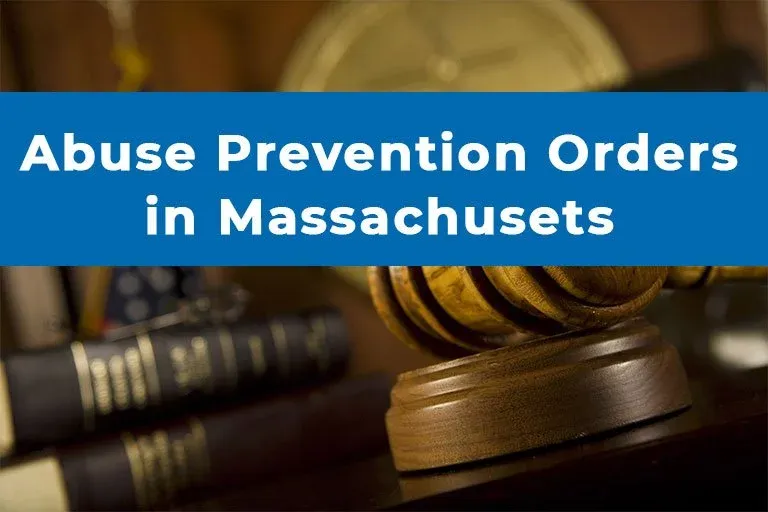
In Massachusetts, an abuse prevention order, or 209A order, is a civil order that provides protection from physical or sexual harm from a family or household member.
The Massachusetts Abuse Prevention Act defines “abuse” as the occurrence of one or more of the following acts:
- (1) attempting to cause physical harm;
- (2) causing physical harm;
- (3) placing one in fear of immediate serious physical harm; or
- (4) causing one to have nonconsensual sexual relations due to force, threat, or duress.
Someone can only obtain an abuse prevention order if one of the aforementioned acts was committed by a family or household member.
A family or household member is defined as:
- (1) a spouse or former spouse;
- (2) someone you live with, presently or in the past;
- (3) someone related by blood or marriage;
- (4) someone with whom you share a child; or
- (5) someone with whom you have had a “substantial dating relationship.”
When plaintiff and defendant does not qualify as that of family or household members
Table of Contents
If the relationship between the plaintiff and defendant does not qualify as that of family or household members, the plaintiff may seek another type of restraining order called a Harassment Protection Order.
The plaintiff is the person applying for the order. The defendant is the person against whom the order is sought and from whom the plaintiff seeks protection.
Obtaining an abuse prevention order
In order to obtain an abuse prevention order, the process begins with the plaintiff going to court.
The plaintiff must visit the clerk’s office to complete necessary forms, including a complaint and affidavit describing the alleged incident(s) of abuse, or reason why protection is needed.
If the court is closed and the plaintiff feels he or she is in immediate danger of abuse, the plaintiff may seek an emergency protection order by visiting the nearest police department.
Police will then contact a judge, who may issue the order by telephone, but only if they believe there is a substantial likelihood of immediate danger of abuse.
If the judge issues the emergency order, it will only remain in effect until the close of business on the next day that court is open. As such, the plaintiff must then go to court before then in order to request an abuse prevention order and file the complaint.
209A order
When the plaintiff files for 209A order at the clerk’s office, once the documentation is complete, he or she will see a judge.
The defendant is not present for this court proceeding. This called an ex parte hearing, where the judge will read the plaintiff’s complaint and ask the follow-up questions of the plaintiff, to be answered under oath.
If the judge believes there is a substantial likelihood of immediate danger of abuse, the court will issue an ex parte abuse prevent order. An ex parte order is temporary, usually lasting only 10 business days. At the end, the court must conduct a full hearing to determine if the order should terminate or continue.
If the ex parte order is issued
If the ex parte order is issued, the defendant must then be “served,” or given papers that notify him or her of the temporary abuse order and the date of the fully hearing. On the date of the full hearing, the plaintiff must appear, otherwise the temporary order will expire or terminate. If the defendant fails to appear, the hearing may proceed in his or her absence.
Following a hearing or defendant’s failure to appear, the court may grant the plaintiff an order that lasts for up to one year. If the defendant appears for the hearing, both parties may either be represented by legal counsel or represent themselves.
In either instance, each part will have the opportunity to present evidence to support or negate the allegations of abuse, and the question or cross-examine one another, along with any witnesses that may be called. The parties will also be offered the chance to challenge or rebut one another’s evidence, if offered.
If a temporary ex parte abuse prevention order is issued
If a temporary ex parte abuse prevention order is issued, it can potentially require defendant(s) to:
- move out of his home (if shared with the plaintiff);
- stop all contact with the plaintiff and any children in plaintiff’s custody;
- surrender any and all firearms;
- relinquish possession of any pets shared with the plaintiff and/or their children
A long-term prevention order may have the same consequences, in addition to paying temporary child support and/or spousal support, and the reimbursement for any losses the plaintiff suffered as a direct result of defendant’s abuse (i.e., lost wages, medical bills, destroyed property).
Violation of abuse prevent order
If an abuse prevent order has been issued, any violation of that order is a criminal offense. While a particular order may have unique terms depending upon the relationship between the parties, all orders prohibit the defendant from abusing, contacting, or coming within a certain distance of plaintiff.
“No contact”
“No contact” means the defendant may not contact the plaintiff personally or through others, via letters or email, phone calls, gifts, or social media. If you have received notice that an abuse prevention order has been issued against you, it is strongly encouraged that you retain legal counsel.
The Law Office of John L. Calcagni III, Inc. has many years of experience successfully defending against and defeating applications for abuse prevention orders in Massachusetts. Call us today at (508) 213-9113 for a free consultation.
There are three types of abuse prevention orders.
Emergency Protective Order
If the court is closed, or a plaintiff’s physical condition precludes them from getting to a court, a judge may issue an emergency protective order over the telephone.
However, the judge must believe there is a substantial likelihood or immediate danger of abuse to do so.
If the emergency order is granted, the plaintiff must then appear in court on the next business day to file a complaint, or petition, for an order.
If the plaintiff’s physical condition prevents them from appearing, they may have another party file the complaint on their behalf, along with an affidavit explaining the circumstances of their physical condition.
Ex Parte Orders
If a plaintiff goes to court to file an abuse prevention order, they may request a temporary ex parte order. These orders may be granted immediately, without a full court hearing, and without the defendant being notified beforehand, if the judge believes there is a substantial likelihood of immediate danger of abuse. This order will last until a hearing is held, typically within 10 business days.
Long-Term Orders
A final (long-term) abuse prevention order may be issued only after a defendant is given notice and has had the opportunity to appear at a court hearing.
During this hearing, both the plaintiff and the defendant will have a chance to present evidence to a judge.
If the plaintiff can prove they were abused, the judge may issue them an order for up to one year. After the one year is up, another hearing will be held, at which time the plaintiff may seek to have the order extended.
If a temporary ex parte abuse prevention order is issued
It can potentially require defendants to move out of their home (if they share it with the plaintiff); stop all contact with the plaintiff and any children in their custody; surrender any and all firearms; relinquish possession of any pets shared with the plaintiff or their children. A long-term prevention order can include the same requirements, in addition to paying temporary child support and/or spousal support, and the reimbursement for any losses the plaintiff suffered as a direct result of the abuse (i.e., lost wages, medical bills, destroyed property).
If an ex parte or long term order has been issued against you
Violations of that order are a criminal offense. While a particular order may have unique terms depending on the relationship between the plaintiff and the defendant, all orders prohibit abusing, contacting, or coming within a certain distance of the plaintiff. No contact means the defendant may not contact the plaintiff personally or through others, via letters or email, phone calls, gifts, or social media. However, many defendants are unaware of what may or may not constitute a violation, and find themselves facing a criminal case.
If you’ve received notice of such an abuse prevention order, or any other type of restraining order, contact the Law Office of John L. Calcagni, III at (508) 213-9113 for a free consultation.

